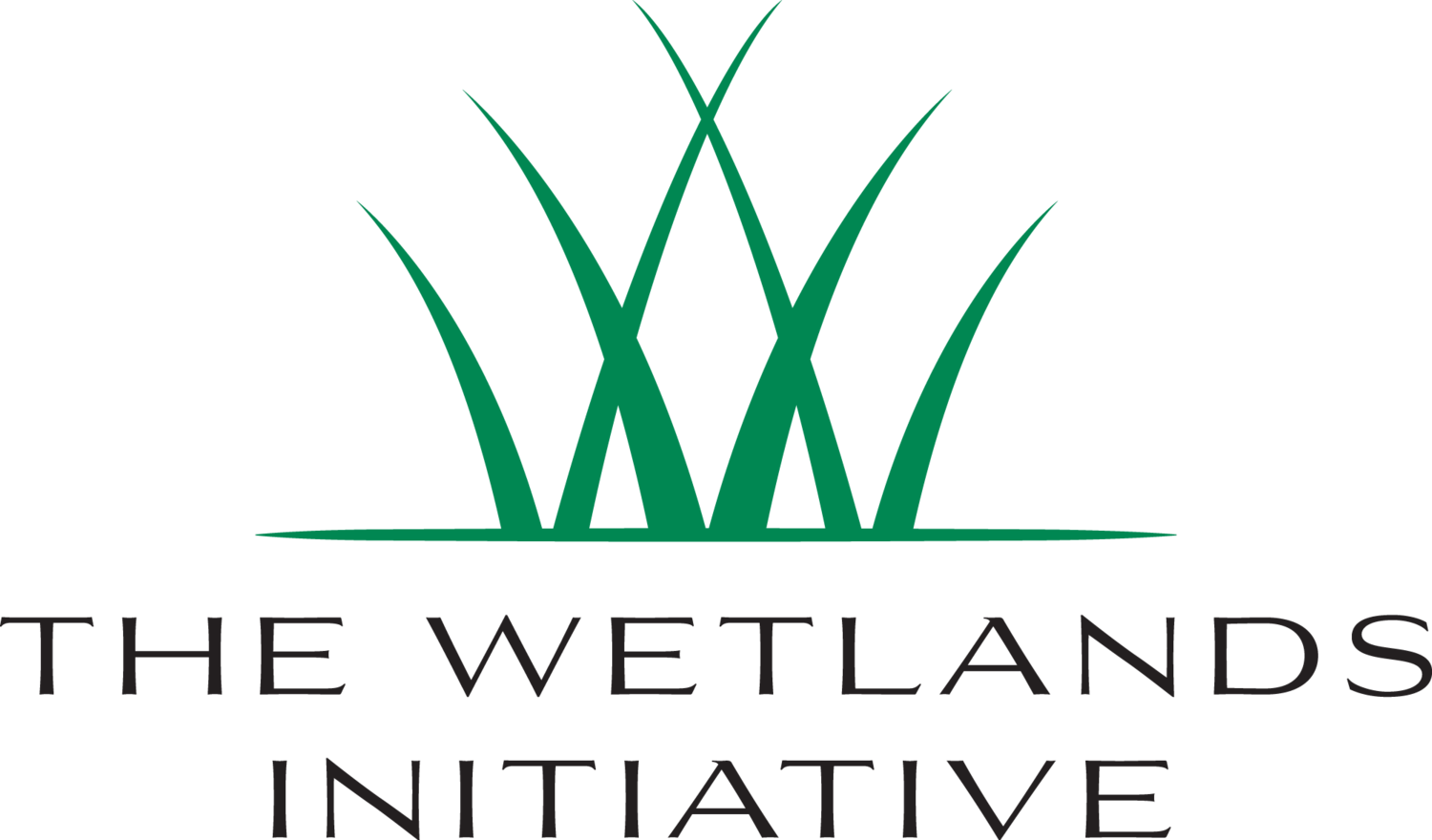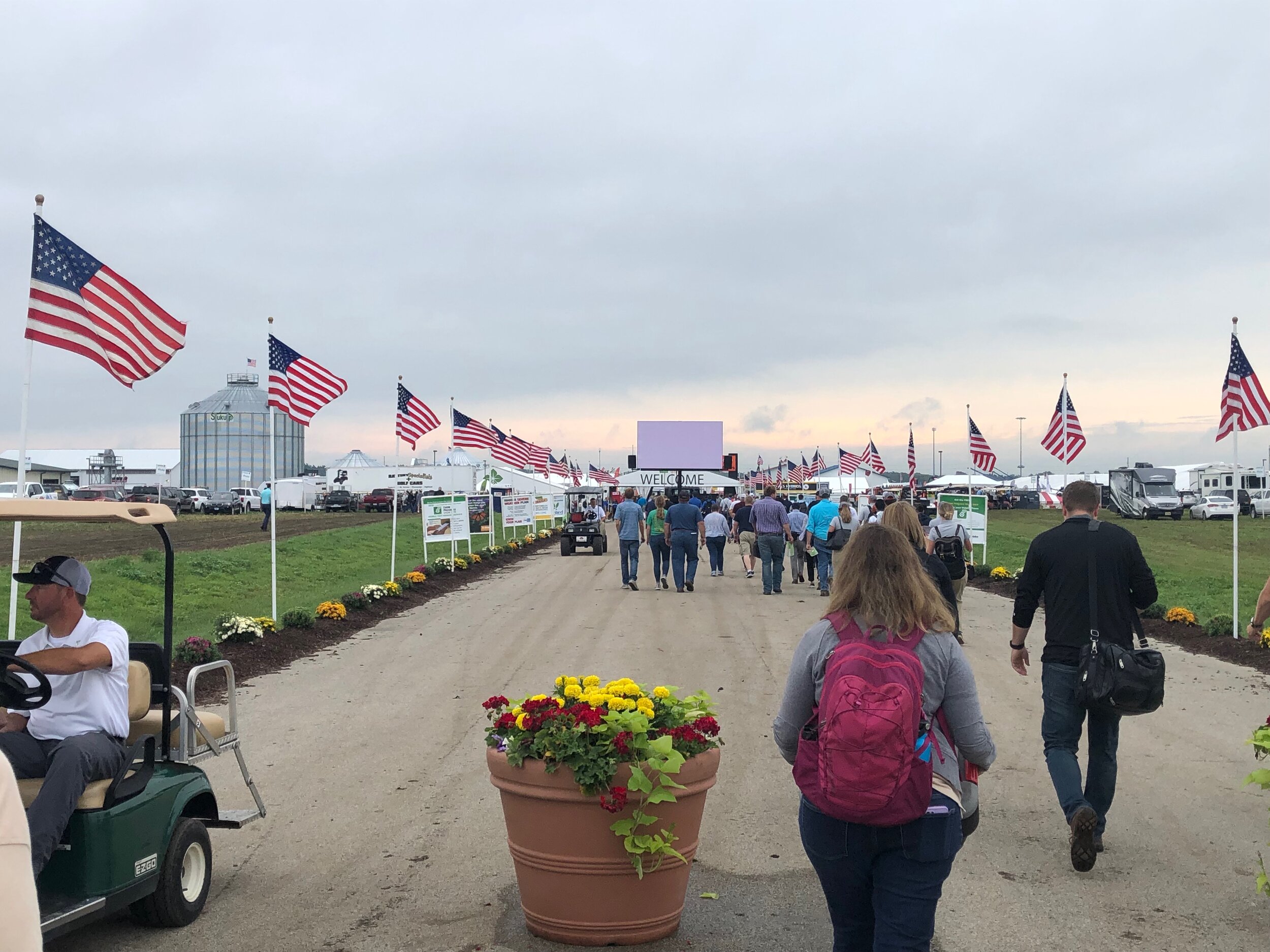In the closing days of August, TWI’s Senior Environmental Engineer Jill Kostel and Field Outreach Specialist Jean McGuire showcased Smart Wetlands at the Illinois Farm Progress Show. It’s the nation’s largest outdoor farm show, with 90 acres of exhibits, 300 acres of field demonstrations, and more than 600 exhibitors—from tractor manufacturers to seed purveyors to ag-tech startups. The three-day show drew more than 100,000 attendees to Decatur from around the world to learn about the latest in farming.
Jill Kostel, TWI’s senior environmental engineer, approaches the main entrance gate to the huge Farm Progress Show in Decatur, Illinois. Photo by John Briel/TWI.
TWI’s exhibit on constructed wetlands, now more commonly known as Smart Wetlands, was in the Partners in Conservation tent alongside 20-plus state and federal agencies, associations, and nonprofits displaying practices and strategies farmers can use to improve soil health, protect natural resources, and cut down on nutrient runoff. Many of TWI’s Smart Wetlands partners had a presence in the tent, including the Illinois Land Improvement Contractors Association, American Farmland Trust, and Illinois Nutrient Research & Education Council. The displays included TWI’s small-scale “wetland in a tank” as well as a model bioreactor, a soil pit showing the profile of prairie soils, and a rain simulator. Nearly 3,000 show attendees stopped by the tent to learn about the latest farm conservation practices.
“It was our first time at Farm Progress and it was great to be in the conservation tent alongside our project partners and peers. Plus, it provided an opportunity to describe our work to a new and larger audience of farmers, landowners, and ag companies,” said Jill Kostel.
For those new to this TWI project, Smart Wetlands are small constructed wetlands custom-designed to fit within a farmer’s tile drainage system for the specific purpose of reducing nutrient loss, meaning runoff of excess nutrients from fertilizers into local waterways. It’s an effective and efficient nitrogen-removal practice that can operate for 30 years or more with little maintenance. The wetlands are shallow, planted with native vegetation, come in a range of sizes, and offer an alternative use for hard-to-farm or negative-revenue land.
For those already familiar with this project, you may be wondering why we’re now calling it Smart Wetlands. The name change emphasizes the solutions-focused aspect of the project and aims to broaden the appeal of constructed wetlands to farmers who are increasingly interested in precise, data-driven farming practices.
Jill Kostel explained, “Our constructed wetlands are ‘smart’ because GIS tools, databases, and other technology are used to plan and implement them.” In business, SMART is a commonly used acronym for the goal-setting process and stands for specific, measurable, achievable, relevant, and timely. For TWI, the acronym has been adapted somewhat and stands for specifically sited, measurable, aligned with state goals to reduce nutrient loss, resilient and relevant, and time-saving. By incorporating familiar business and technical language into the new project name, TWI hopes to communicate that constructed wetlands aren’t just a great conservation practice but also a good investment that fits within a successful farm operation.
TWI's Farm Progress Show display included an informative small-scale replica of a Smart Wetland. Photo by Jean McGuire/TWI.
For the TWI display at the Farm Progress Show, Jill and Jean engineered a small-scale Smart Wetland fashioned from a cattle tank. Their detailed model depicted the water depth and soil type needed to develop a shallow marsh ecosystem, which provides the best environment for naturally removing nitrate, a common pollutant in agricultural runoff.
The clever design also included a planting of native wetland species grown at TWI’s Dixon Waterfowl Refuge. In addition to removing excess nutrients, Smart Wetlands have secondary benefits like habitat for wildlife and pollinators.
The native species planted in the model were American sweet flag, softstem bulrush, common rush, red bulrush, chairmaker’s rush, giant bur-reed, common arrowhead, and prairie cordgrass. Many species can play a role in removing nitrates from nutrient runoff, but we like to plant native species in our farm-based wetlands in keeping with TWI’s overall mission.
To date, TWI has built four Smart Wetlands. The most recent one went in this past summer at Illinois Central College’s Nutrient Loss Reduction Demonstration Farm in East Peoria. Through the college’s highly regarded and popular agricultural program, the next generation of farmers will have the opportunity to learn hands-on how Smart Wetlands can be part of a sustainable and productive operation.
To learn more about Smart Wetlands, please visit TWI’s farmer-focused website www.smartwetlands.farm or follow us @SmartWetlands on Twitter and Instagram.


